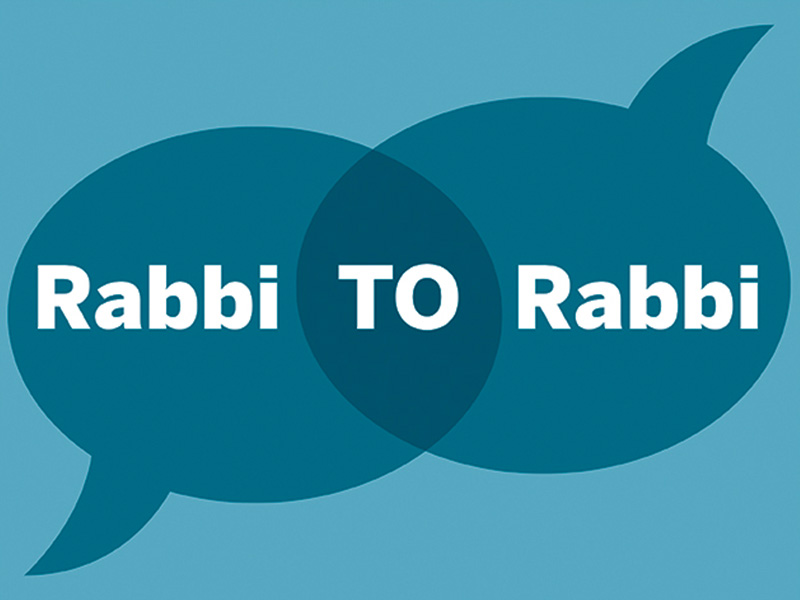Rabbi Adam Cutler
Beth Tzedec Congregation, Toronto
Rabbi Adam Scheier
Congregation Shaar Hashomayim, Montreal
Rabbi Scheier: The recent conversation about Orthodox women’s ordination and titles has dominated my inbox and Facebook wall. As I read the many articles, posts and rabbinic proclamations, one aspect strikes me as significant: it seems that a disproportionate number of participants in this conversation are rabbis who do not have traditional pulpits. These rabbis share opinions not because they have been hired or elected by Jews seeking leadership, but simply because they have a keyboard and an Internet connection.
The result is revolutionary: communal norms and policies are being influenced by rabbis who are most active in social media and not necessarily by those community rabbis who, we like to believe, have their finger on the pulse of the Jewish world.
Perhaps there is an aspect of meritocracy to this – those with the best ideas and means of expression are heard loudest. On the other hand, this may represent a shift in rabbinic influence that leaves traditional community rabbis out in the cold.
What do you think about the new rabbinic landscape? Does social media give disproportionate weight to some voices over others?
Rabbi Cutler: It is absolutely true that social media has changed the landscape of influencers, rabbinic or otherwise. Those who write most often and share most widely will influence most greatly.
Social media does somewhat level the playing field, or at least lower the barriers to participation in important public conversations. But rabbis have a responsibility to share their vision. Facebook, Twitter and Instagram are just modern iterations of communications platforms.
Rabbi Scheier: I am not certain if social media levels the playing field, as you write, or creates an entirely new playing field. This doubt feeds into my struggle with social media’s grasp on my time and attention. On the one hand, I am aware of social media’s powerful ability to expand the reach and diversity of the audience. On the other hand, I am aware that even when one of my Facebook posts generates scores of “likes” and “shares,” come Shabbat morning in the synagogue, very few of my regulars will be aware of or tuned in to the conversations that have dominated social media.
In Rabbi Jonathan Sacks’ 1992 essay “Creativity and Innovation in Halakhah,” he warns of the sociological divide between the centres of Jewish law – the yeshivot – and the centres of congregational life.
I adapt this concern to a new reality: the sociological divide between those whose Jewish thinking is primarily influenced by their Facebook feed versus those whose Jewish thinking is primarily influenced by the pulpit or the Shabbat table discussion. At the very least, this divide will influence the allocation of time, efforts, and output of 21st-century rabbis.
Do you feel the tension between energies devoted to maintaining a social media presence and those dedicated to conventional rabbinic responsibilities?
Rabbi Cutler: Social media invites the question: who is our congregation? Of course, we both serve synagogues with a defined membership. Yet at the same time, we are looked upon by the wider community to share our words (if not our wisdom). The wider community, and indeed many within our own congregations, are not in shul on Shabbat. Social media is another avenue to generate a broader reach – within our membership and beyond. Indeed, my more popular posts find a larger audience than a Shabbat sermon.
Facebook, in particular, also facilitates conversation, expanding upon what was once the purview of kiddush and Shabbat lunch. If I want to not only share, but have people engage in a dialogue, social media has advantages over the traditional sermon. I particularly enjoy seeing friends from outside Toronto comment on my posts. They don’t have the opportunity to hear me speak in shul and often have tremendous insight (if not expertise) in the topics about which I am posting. My local friends and congregants who see my posts and the comments that are generated gain tremendously from my network of some very bright commenting people.
I see social media as one more piece in the matrix of rabbinic responsibility. There is no more tension between traditional rabbinical responsibilities and social media than between visiting the sick and preparing for a class, or writing a sermon and planning an event.
